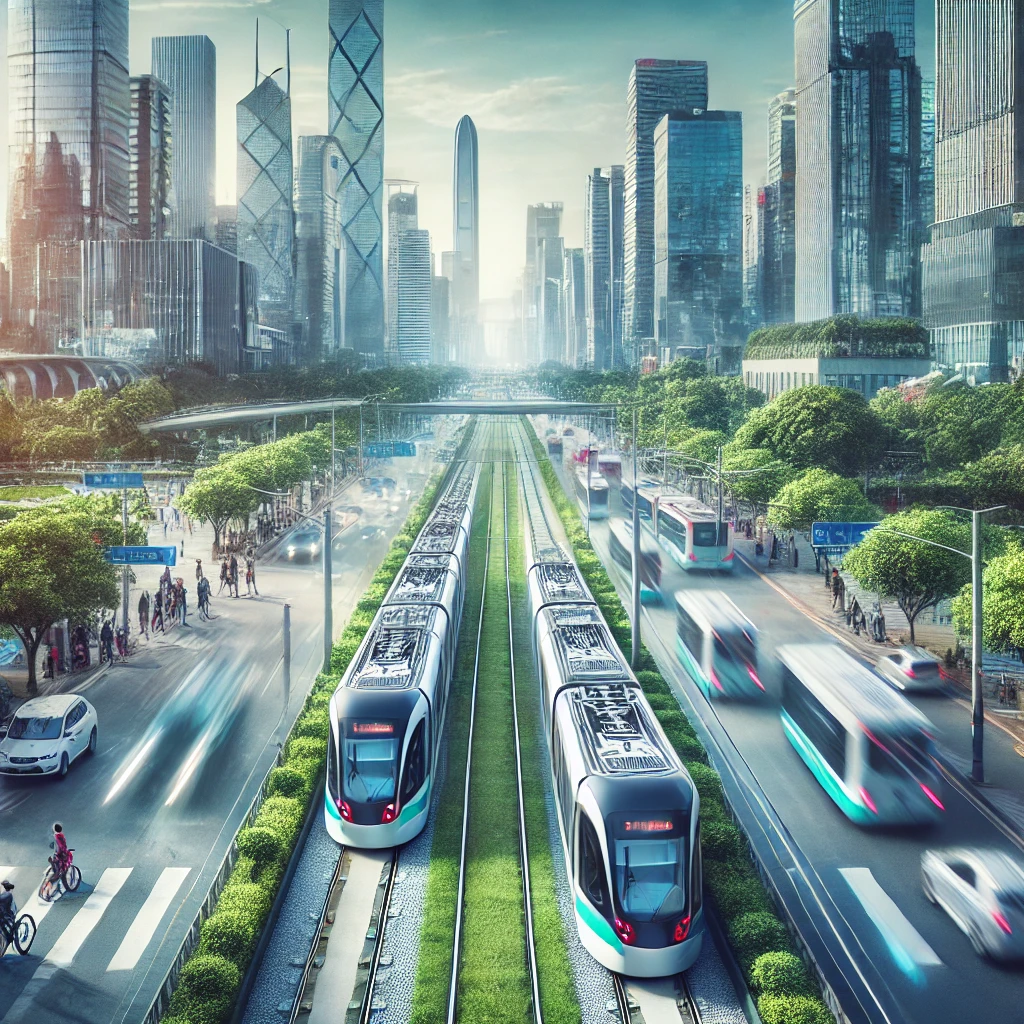China, a global leader in urban development, is also at the forefront of the shift toward sustainable transportation. As cities grow and populations swell, the need for efficient, eco-friendly public transportation systems has become increasingly urgent. In response, China has invested heavily in electric tramways—an innovative solution that is transforming urban mobility and significantly reducing carbon emissions.
The Rise of Electric Tramways
Electric tramways are a cornerstone of China’s broader strategy to combat urban air pollution and reduce the country’s carbon footprint. Unlike traditional buses and trams that rely on diesel or other fossil fuels, electric tramways are powered entirely by electricity, offering a cleaner, quieter, and more efficient mode of transport. Cities like Shenzhen, Beijing, and Guangzhou have pioneered the adoption of these electric tram systems, setting a global example of how modern technology can be leveraged to create more sustainable urban environments.
Shenzhen: A Model for Sustainable Transport
Shenzhen, often referred to as the “Silicon Valley of China,” has emerged as a world leader in sustainable urban transportation. The city has made headlines for its fully electric public transportation system, which includes not only buses but also an extensive network of electric trams. The tramways are designed with cutting-edge technology, including wireless charging capabilities and energy-efficient motors, ensuring minimal environmental impact while maintaining high levels of service.
The success of Shenzhen’s electric tramways is a testament to the city’s commitment to innovation and sustainability. By replacing fossil-fuel-powered vehicles with electric alternatives, Shenzhen has drastically reduced its urban air pollution levels, improving the quality of life for its residents and setting a precedent for other cities to follow.
Technological Advancements and Environmental Benefits
The implementation of electric tramways in China is supported by several technological advancements that enhance their efficiency and environmental benefits. Wireless charging systems, for instance, allow trams to recharge at stations without the need for cumbersome cables, making the process more seamless and reducing downtime. Additionally, regenerative braking systems capture and reuse energy, further increasing the overall efficiency of the trams.
These technological innovations are not only helping to reduce greenhouse gas emissions but also lowering operational costs, making electric tramways a financially viable option for cities. The reduction in noise pollution is another significant benefit, creating a more pleasant urban environment for residents.
Expanding the Network: A National Strategy
China’s success with electric tramways is not limited to a few cities. The country’s national strategy aims to expand the network of electric trams across its major urban centers. By integrating these systems into existing public transport networks, China is creating a cohesive, sustainable urban mobility framework that can accommodate its growing population while minimizing environmental impact.
This expansion is supported by significant government investment and policy initiatives that encourage the adoption of electric vehicles, including trams, across the country. The goal is to create a nationwide network of electric public transport that reduces the country’s dependence on fossil fuels and supports its broader environmental objectives.
Conclusion
Electric tramways represent a significant step forward in China’s efforts to create more sustainable cities. By embracing this technology, cities like Shenzhen, Beijing, and Guangzhou are leading the way in reducing urban air pollution, lowering carbon emissions, and improving the quality of life for their residents. As China continues to expand its network of electric trams, it sets an example for the rest of the world, demonstrating that sustainable urban transport is not just a possibility, but a reality that can be achieved with the right investment and innovation.

Leave a Reply